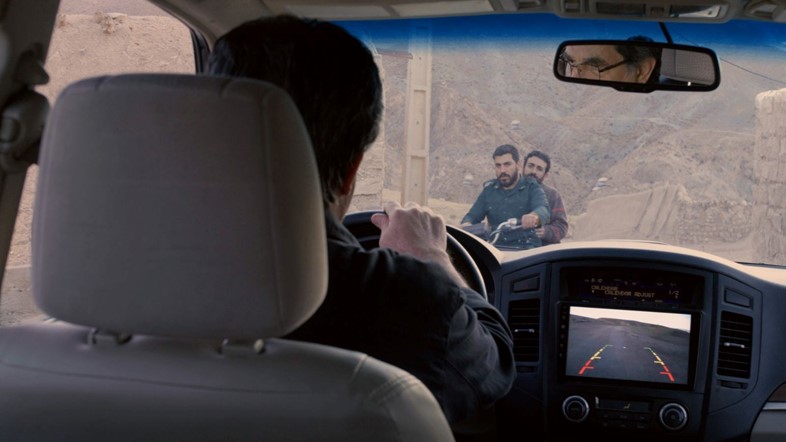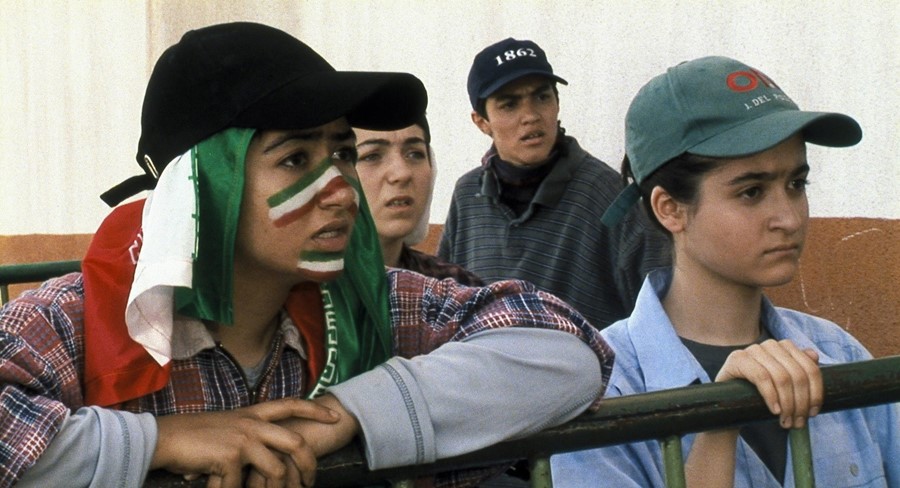The jailed Iranian auteur drew plaudits for his latest film, No Bears, at Venice Film Festival. Here’s our guide to a cinematic oeuvre steeped in defiance
This year, the Special Jury prize at Venice Film Fesitval went to a film that should not even exist. Jafar Panahi, the acclaimed Iranian auteur behind No Bears, is 12 years into a two decade-long filmmaking ban after being convicted of creating anti-state propaganda in 2010; earlier this year, he was arrested for protesting the detainment of fellow director Mohammad Rasoulof and has since been imprisoned on a previously handed-down six-year sentence. His films – nine made since the ban – are crafted under cover of metaphorical darkness, using easily accessible equipment and often non-professional actors, and smuggled out of the country on memory sticks. They receive no government funding; they are, predictably, banned in Iran.
Panahi’s body of work represents, in many ways, a shift (back) from cinema as industry to cinema as medium. Reminiscent of the DIY machinations of early pioneers such as Georges Méliès, Panahi’s cinematic language pushes at the conceivable limits of narrative representation; his films are restrained by the tools available to them but boundless in their aspirations for the form. In his hands, cinema becomes a tool for political expression and a political end in itself. In a country where every film has to be approved by censors, the very fact of a film outside of that framework, Panahi recognises, is ripe with latent defiance. Here, we explore five films that foreground his latest act of disobedience.
The White Balloon, 1995
Panahi’s debut feature is a deceptively simple tale: seven-year-old Razieh pleads with her mother for money to buy a goldfish on New Year’s Eve, only to repeatedly lose the money that’s given to her in a series of friendly and unfriendly encounters with passers-by. Co-written by Abbas Kiarostami – one of the Iranian new wave’s most seminal directors, for whom Panahi started out as an assistant director – the gentle rollick of Razieh’s adventure belies a profoundly humanist tale, reorienting the everyday occurrences of the world through the oft-neglected perspective of a child. It laid the groundwork for Panahi’s career-long attention towards marginalised subjects, and the capacity of cinema not just to observe, but to look outward and through.
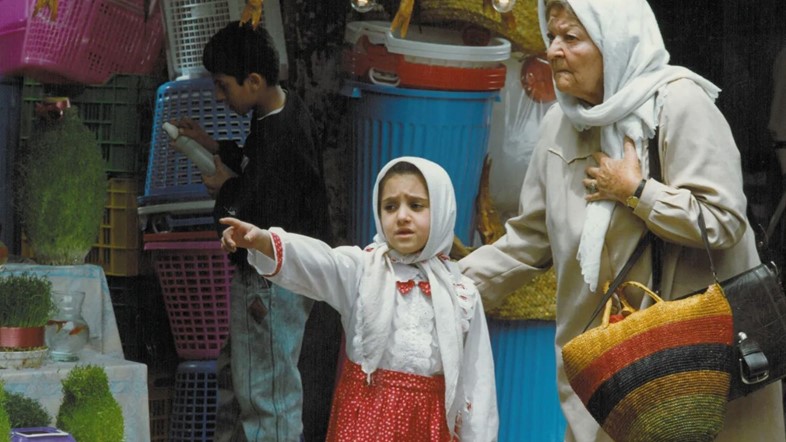
Offside, 2006
Panahi’s last feature-length outing before his 20-year ban, Offside follows a group of female football fanatics who try to attend a game between Iran and Bahrain. The only hiccup? Women are forbidden from attending matches in Iran, under threat of arrest. It is not difficult to see what spooked the Iranian government about Panahi’s increasingly mutinous practice; filmed on the edges of an actual football match in Tehran, with two endings planned depending on the result, Offside – while not precisely metafiction – invests in a naturalism so complete that the boundaries between fiction and reality, imagined resistance and real-world defiance fade like a mirage. Yet despite its documentary-like realism, a curious enchantment threads through this feminist polemic. The pen that the girls are rounded up into acts as a kind of unsettled netherworld, one of the many liminal spaces – cars, border towns, lifts – that permeate Panahi’s films. Filmmaking becomes a cipher for states of belonging – or lack thereof – depicting and entangling with the legal and political mechanisms that decide such fates.
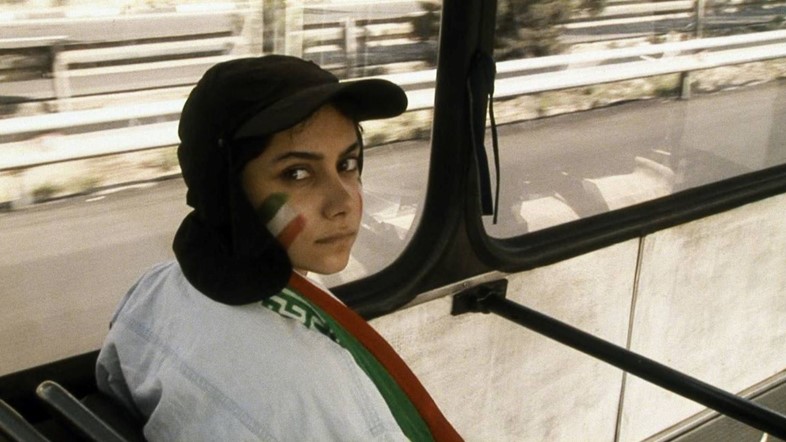
This Is Not a Film, 2011
In 1929, Belgian surrealist René Magritte painted The Treachery of Images, in which a sleekly rendered pipe appears with the words “Ceci n’est pas une pipe” (This is not a pipe) beneath it. The now famous and ironically much reproduced work called attention to the bounds of representation, and to the gaps that exist between sign and signifier, image and reality. Panahi’s wryly and flagrantly titled This Is Not a Film trades in many of the same ideas, bringing them from the philosophical to the political realm to examine the problems and possibilities in the tension between censorship and creative expression. The first feature made after his ban, This Is Not a Film is documented on iPhones and cameras inside Panahi’s own flat while under house arrest, and depicts a director as firmly attached to his craft as ever. It’s a film that strips the art of cinema down to its barest, most austere form, only to reveal the exhilarating narrative and aesthetic dynamism of filmmaking itself.

Taxi, 2015
In Taxi, Panahi once again stars as himself, this time venturing outside of his flat to drive a taxi around the streets of Tehran, picking up various larger-than-life passengers played by non-professional actors. Taxi continues Panahi’s investigation into the democratic possibilities of filmmaking, which becomes in this film a kind of folk art, a warm, slice-of-life snapshot told not just about but through Iran’s people. As Panahi trawls the streets of Tehran, amiably adjusting his dashboard camera, Taxi takes on an even more intricate and playfully elusive metafictionality than This Is Not a Film, with Panahi inhabiting not just the persona of a taxi driver, but also that of Jafar Panahi the director, adored by a pirate video salesman who rides shotgun and amusingly ignored by two elderly ladies clutching a goldfish in the back. It is a film about the illusion of control that cinema can attempt to impose on an unruly, chaotic world. Filmmaking, Taxi reminds us, is a simultaneously authentic and inauthentic process: it can summon magic from the mundane, and disguise magic as mundanity.
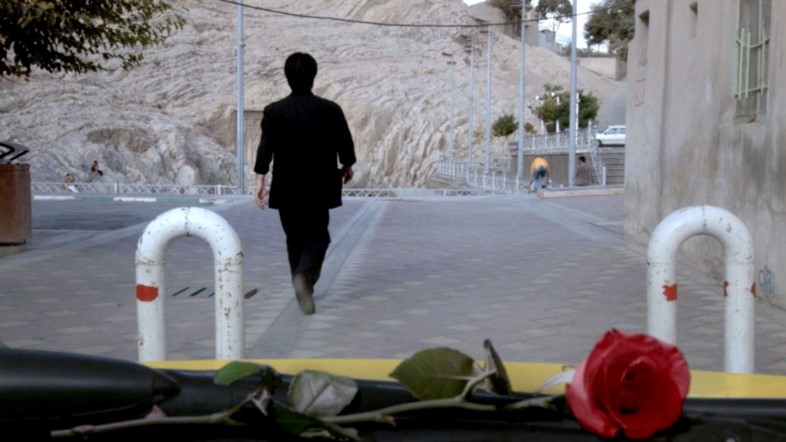
No Bears, 2022
No Bears, Panahi’s latest film and the first to be released following his shock imprisonment in July, is ostensibly a portrayal of two couples whose paths towards happiness are impeded by abstracted yet unbreachable obstacles. Yet, mere minutes into the film’s first scene in Turkey, the camera pulls out to reveal Panahi sitting in front of his laptop, directing remotely from a border town in Iran where he subsequently gets in trouble for photographing a couple who should not be together.
During the film’s press conference at the Venice Film Festival, one of the film’s stars, Reza Heydari, replied to a question about why Panahi receives more persecution from the state than other politically minded Iranian directors. The answer, Heydari responded simply, is in the film itself. What he meant by this, perhaps, is that No Bears, and Panahi’s films more broadly, act not just as political critiques of the Iranian state, but instruction manuals on cinema’s capacity to enable these critiques – on the inextricability of art and action, film as noun and film as verb. Half journey down the River Styx and half postmodern farce, No Bears is a matryoshka-like parable on the political power of the image, in which acts of documentation, representation and authenticity swallow each other like an ouroboros. It is reminiscent, in a way, of the old myth that the flash and click of a photograph can steal away the soul. In Panahi’s works, films can capture the soul of society like nothing else. But they don’t steal it away. Instead, they examine it, flush with the grace of their own process, and hand it back, illuminated anew.
